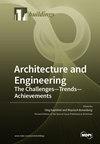模糊-ISM-MICMAC 在影响跨越现有铁路线的转体桥施工风险分析中的应用:案例研究
IF 3.1
3区 工程技术
Q2 CONSTRUCTION & BUILDING TECHNOLOGY
引用次数: 0
摘要
旋转桥梁建造(SBC)技术在建造跨越既有铁路线(ERL)的桥梁方面具有显著优势,但同时也会带来来自 "天窗 "和铁路边界的复杂风险。一个显著的挑战是这些风险之间的关系和相互依存性,它们通过相互影响共同增加了安全隐患。以往的研究通常侧重于降低特定任务或操作中固有的风险,而较少关注相互依存关系带来的风险。为了探索这一研究空白,我们开发了一个新颖的框架,将模糊逻辑、解释性结构建模(ISM)和应用于分类的交叉影响矩阵乘法(MICMAC)方法(模糊-ISM-MICMAC)整合在一起,研究跨越 ERL 的 SBC 风险之间的关系和相互依存性,以及风险控制的关键点。此外,通过文献综述、案例分析和专家访谈收集的数据得出了 28 个风险因素。然后,应用 ISM 将复杂的风险关系提炼为清晰的多级层次结构,准确地说明了风险因素之间复杂的相互关系。结合 MICMAC 分析,研究结果表明,施工技术的选择、方案设计、施工演练和安全设施的配备等前期工作,对于预防跨越 ERL 的 SBC 风险至关重要。我们将这些研究成果应用于小纪庄桥的双 T 型结构转体施工中,对其实用性和效率进行了全面的测试和验证。本研究的重要贡献在于识别、阐明和可视化了 SBC 跨战争遗留爆炸物复杂风险因素的相互关系,并为类似桥梁建设项目的安全管理提供了具体的解决方案。研究成果和风险控制建议为管理其他转体桥施工风险提供了宝贵的见解。本文章由计算机程序翻译,如有差异,请以英文原文为准。
Application of Fuzzy-ISM-MICMAC in the Risk Analysis Affecting Swivel Bridge Construction Spanning Existing Railway Lines: A Case Study
Swivel bridge construction (SBC) technology has significant advantages in building bridges that span existing railway lines (ERLs), but it also entails complex risks from ‘skylight’ windows and railway boundaries. A notable challenge is the relationships and interdependencies among these risks, which collectively increase safety hazards through mutual influence. Prior research has typically focused on mitigating the risks inherent in particular tasks or operations, with less emphasis on the risks from interdependencies. A novel framework was developed to explore this research gap by integrating fuzzy logic, interpretive structural modeling (ISM) and the cross-impact matrix multiplication applied to classification (MICMAC) approach (Fuzzy-ISM-MICMAC) to investigate the relationships and interdependencies among the risks of SBC spanning ERLs and the critical points of risk control. Furthermore, the data collected from a literature review, a case analysis and expert interviews resulted in 28 risk factors. Then, the application of ISM distilled complex risk relationships into a clear, multilevel hierarchy, accurately illustrating the complex interrelationships among risk factors. Combined with MICMAC analysis, the research findings indicate that preliminary works such as the selection of construction technology, scheme design, construction rehearsal and the provision of safety facilities are essential for preventing risks in SBC spanning ERLs. We applied these findings to the double T-structure swivel construction of the Xiaojizhuang Bridge, where its practicality and efficiency were thoroughly tested and validated. This research’s critical contribution is identifying, clarifying and visualizing the interrelationships of the complex risk factors of SBC spanning ERLs and providing specific solutions for safety management in similar bridge construction projects. The research results and risk control recommendations offer valuable insights for managing other swivel bridge construction risks.
求助全文
通过发布文献求助,成功后即可免费获取论文全文。
去求助
来源期刊

Buildings
Multiple-
CiteScore
3.40
自引率
26.30%
发文量
1883
审稿时长
11 weeks
期刊介绍:
BUILDINGS content is primarily staff-written and submitted information is evaluated by the editors for its value to the audience. Such information may be used in articles with appropriate attribution to the source. The editorial staff considers information on the following topics: -Issues directed at building owners and facility managers in North America -Issues relevant to existing buildings, including retrofits, maintenance and modernization -Solution-based content, such as tips and tricks -New construction but only with an eye to issues involving maintenance and operation We generally do not review the following topics because these are not relevant to our readers: -Information on the residential market with the exception of multifamily buildings -International news unrelated to the North American market -Real estate market updates or construction updates
 求助内容:
求助内容: 应助结果提醒方式:
应助结果提醒方式:


